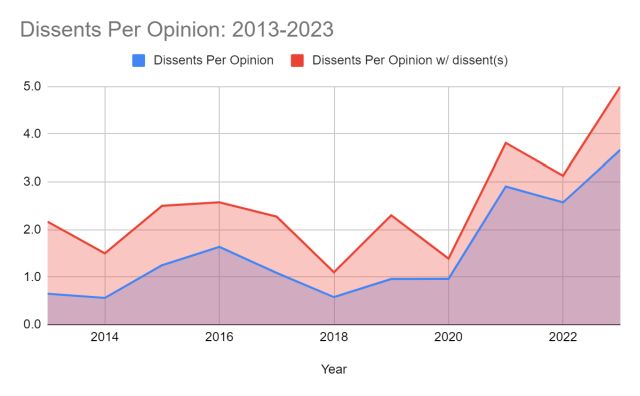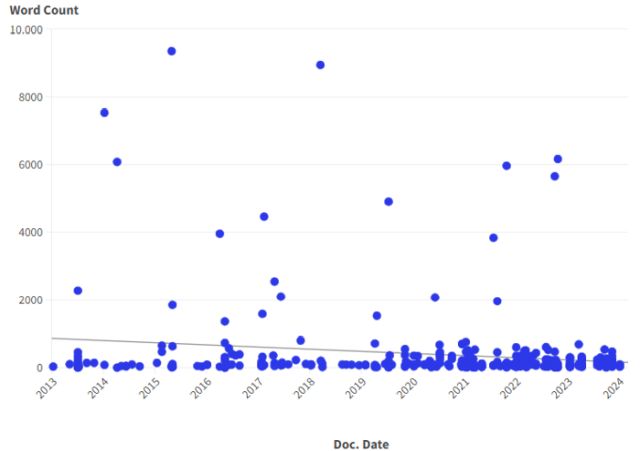This is part one of our USITC Commissioner Series.
Read part two here and part three here.
At the International Trade Commission (ITC), every decision made by an Administrative Law Judge (ALJ) is subject to review by a panel of up to six Commissioners. In general, the Commission speaks as a unified voice through its Commission Opinion, generally affirming, reversing, or vacating the ALJ below. At times, however, Commissioner opinions differ, causing individual Commissioners to issue "separate views" in the form of a dissent or concurrence.
New data shows a greater frequency of these separate views, hinting at discord regarding the Commissioners' jurisprudence. Increasingly, Commission Opinions are becoming filled with separate views in the form of "mini-opinions" within footnotes. Looking at all Commission Opinions over the past decade, some trends are beginning to emerge.
Separate views are increasing. Approximately 57% of all public Section 337 opinions published between the start of 2013 and the end of 2023 have at least one dissent or concurrence, but the bulk of them have been issued in just the last three years. Between 2013 and 2020, the average opinion had approximately one dissent. Since 2021, that has risen to about three.

Looking closer at the data, the below graph plots separate views over time. The chart not only further underscores the increasing frequency of these views; it also shows that they are getting shorter. Lengthy opinions (i.e., opinions longer than 1000 words) continue to be the anomaly, appearing approximately twice a year. Mini-opinions, by contrast, are becoming more numerous.

Interestingly, plotting word counts only for footnote dissents/concurrences shows the opposite trend. Mini-opinions are getting longer. Commissioners seem to be addressing more substantive disagreements within these footnotes.

Accordingly, we have entered the era of the mini-opinion, where the Commission no longer speaks with a single voice. Instead, Commission Opinions are filled with interwoven contradictions and qualifications. Practitioners would be prudent to pay close attention to the substance of these mini-opinions. As time goes on and Commissioners come and go, today's separate views may be tomorrow's majority opinion.
The content of this article is intended to provide a general guide to the subject matter. Specialist advice should be sought about your specific circumstances.



